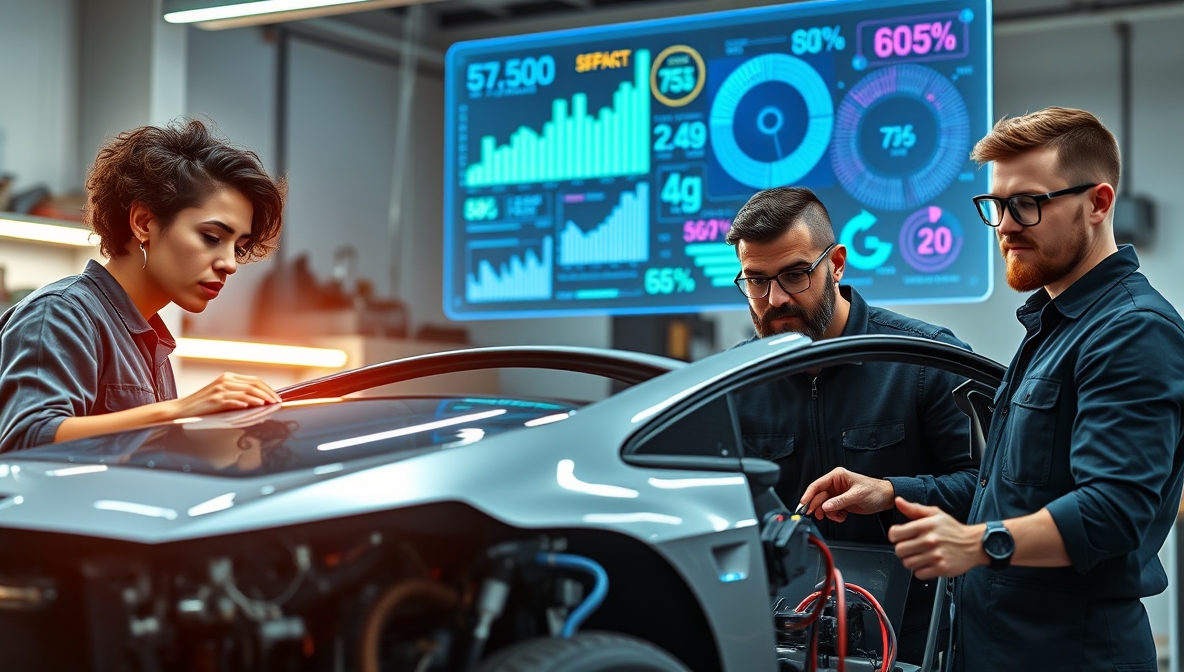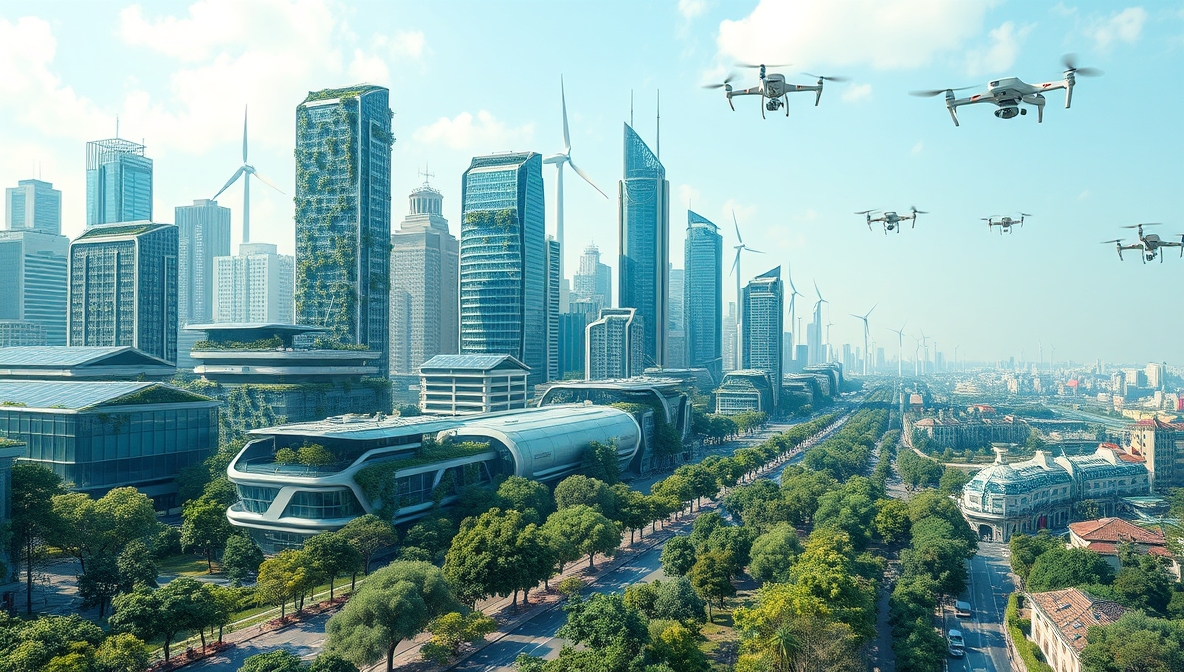As the world shifts towards more sustainable practices, the technology sector has become a significant driver of this change. With growing concerns over climate change and environmental degradation, organizations are now prioritizing innovations that reduce their carbon footprints. From renewable energy solutions to eco-friendly data centers, green technology (green tech) is leading the charge in making the future more sustainable.
This blog post explores key innovations in green tech, their impact on the environment, and how they are transforming the technology landscape.
The Importance of Sustainability in Technology
The global climate crisis has brought sustainability to the forefront of every industry, and the technology sector is no exception. With massive data centers, manufacturing facilities, and global supply chains, tech companies have traditionally been significant contributors to greenhouse gas emissions. However, as public awareness and governmental pressure increase, businesses in the sector are turning their attention to green innovations.
Sustainability in technology involves creating products and solutions that reduce environmental harm, conserve energy, and promote the responsible use of resources. Companies that implement sustainable practices not only reduce their ecological footprint but also position themselves as leaders in an increasingly eco-conscious market.
The Role of Renewable Energy
One of the most impactful areas of green innovation is in the field of renewable energy. For decades, the technology sector has relied on fossil fuels to power data centers, production facilities, and offices. The adoption of renewable energy sources like solar, wind, and hydropower has dramatically shifted this dynamic.
Solar Power: Tech giants like Google and Apple have made significant investments in solar energy to power their operations. Google’s sustainability efforts are highly regarded; they have committed to running their global operations on 100% renewable energy, including large solar farms in the U.S. Apple, too, has achieved a major milestone in 2020 by powering all its facilities worldwide with renewable energy.
Wind Power: Amazon has also invested heavily in wind energy, becoming the largest corporate purchaser of renewable energy in the world Amazon Sustainability. The company announced plans to power 100% of its operations with renewable energy by 2025, a key step toward their climate pledge to reach net-zero carbon by 2040.
Hydropower: Hydropower remains one of the oldest and most reliable sources of renewable energy. Countries like Norway and Canada heavily rely on hydropower for electricity, creating opportunities for tech companies to establish energy-efficient data centers in these regions.
Energy-Efficient Data Centers
The demand for cloud computing, AI processing, and big data has led to the proliferation of data centers across the globe. However, these data centers are notorious for consuming enormous amounts of electricity. It is estimated that data centers worldwide consume around 1% of global electricity annually.
To counter this, tech companies are adopting green tech innovations to build more energy-efficient data centers. Google’s DeepMind AI is being used to improve the efficiency of its data centers, reducing energy consumption by as much as 30% Google DeepMind AI. Microsoft’s Project Natick is another example, where the company experimented with underwater data centers that use less energy by leveraging the natural cooling properties of the ocean.
Liquid Cooling Systems: Traditional air-cooled data centers use significant amounts of energy to maintain optimal temperatures. In contrast, liquid cooling systems use liquids like water or coolants to absorb heat more efficiently, reducing overall energy consumption. Companies like Facebook have been pioneers in implementing such systems to minimize energy use in their facilities Facebook Sustainability.
Green Software Development
While hardware often gets most of the attention, there is also a push for greener software solutions. Developing energy-efficient software helps reduce power consumption and enhances the performance of devices.
The Green Software Foundation, a non-profit initiative, advocates for creating software that reduces energy consumption. It focuses on best practices in programming that optimize code for better efficiency, reduce resource usage, and limit the overall energy footprint of software applications.

Circular Economy and E-Waste Reduction
The rapid evolution of technology has led to an increase in electronic waste (e-waste), with millions of devices discarded every year. Sustainable practices such as recycling and reusing electronic components are now gaining traction to reduce this waste.
The Circular Economy concept is built on the principles of recycling, refurbishing, and reusing materials to keep them in circulation for longer. Tech companies are embracing this model by offering trade-in programs for old devices and using recycled materials in new products.
For example, Dell Technologies is leading the charge in e-waste reduction through its Legacy of Good program, which focuses on recycling electronics, using recycled materials in new products, and reducing the overall environmental impact of its supply chain Dell Legacy of Good.
Apple’s Robot Daisy: Apple is tackling e-waste head-on with its robot Daisy, which disassembles old iPhones to recover and reuse valuable materials like cobalt, tungsten, and rare earth metals. Apple’s commitment to reducing e-waste is part of its broader goal to create a closed-loop supply chain, where all materials are reused.
Sustainable Manufacturing and Supply Chains
The tech industry relies heavily on global supply chains that often contribute to significant carbon emissions. Companies are now working to ensure that their manufacturing processes and supply chains are more eco-friendly.
Intel, for example, has set a goal to achieve net-zero greenhouse gas emissions across its global operations by 2040 Intel Sustainability. The company is also investing in sustainable manufacturing practices, using recycled water in its production process and working with suppliers to reduce their environmental impact.
HP Inc. has long been a leader in sustainability, aiming to achieve a fully circular economy by using 100% renewable electricity in its operations. HP also commits to reducing emissions throughout its supply chain, promoting energy-efficient printing technology, and designing products with eco-friendly materials HP Sustainability.
Innovations in Green Transportation

Sustainable transportation is another sector seeing significant green tech advancements. Electric vehicles (EVs) and autonomous driving technologies are rapidly gaining popularity as a way to reduce emissions and energy consumption.
Tesla, the global leader in electric vehicles, is working to revolutionize transportation by making EVs more accessible and affordable. Their battery innovations and advancements in solar-powered charging stations demonstrate their commitment to green technology Tesla Sustainability.
Autonomous Electric Vehicles: The future of transportation could see a shift toward autonomous electric vehicles that reduce human error and optimize energy usage. Companies like Waymo and Uber are investing in autonomous EV technology that could drastically reduce emissions from fossil fuel-powered transportation.
The Role of AI and Machine Learning in Sustainability
Artificial intelligence (AI) and machine learning (ML) have proven to be invaluable tools in advancing sustainability. By analyzing large datasets and identifying inefficiencies, AI can optimize resource usage, minimize waste, and increase energy efficiency.
Smart Grids: AI-powered smart grids help optimize electricity distribution, ensuring that renewable energy sources like solar and wind are efficiently integrated into the grid. This reduces the reliance on fossil fuels and lowers carbon emissions. Siemens is one company investing in smart grid technology to improve the reliability and sustainability of power systems Siemens Smart Grids.
AI in Agriculture: Machine learning algorithms are helping farmers optimize crop yields and reduce resource usage. By analyzing weather patterns, soil quality, and other variables, AI systems can recommend optimal planting schedules, reduce water consumption, and improve overall farm sustainability. John Deere is using AI and IoT technologies to create more sustainable farming practices John Deere AI.
Conclusion
Sustainability is no longer just a buzzword in the technology sector—it’s a driving force behind innovation. From renewable energy and energy-efficient data centers to green software development and sustainable supply chains, tech companies are finding new ways to reduce their environmental impact.
The future of technology lies in the continued advancement of green innovations that promote sustainability. By embracing these solutions, the tech industry can lead the charge in building a more sustainable, eco-friendly world. As consumers, businesses, and governments demand greater accountability, the role of green tech will only grow in importance.
By adopting these innovations today, we can shape a future where technology not only drives progress but also safeguards the environment for generations to come.
References:
Google Sustainability
Apple Environmental Progress
Amazon Sustainability
Energy Innovation
Green Software Foundation
Dell Legacy of Good
Apple Daisy Robot
Intel Sustainability
HP Sustainability
Tesla Sustainability
Waymo
Siemens Smart Grids
John Deere AI












